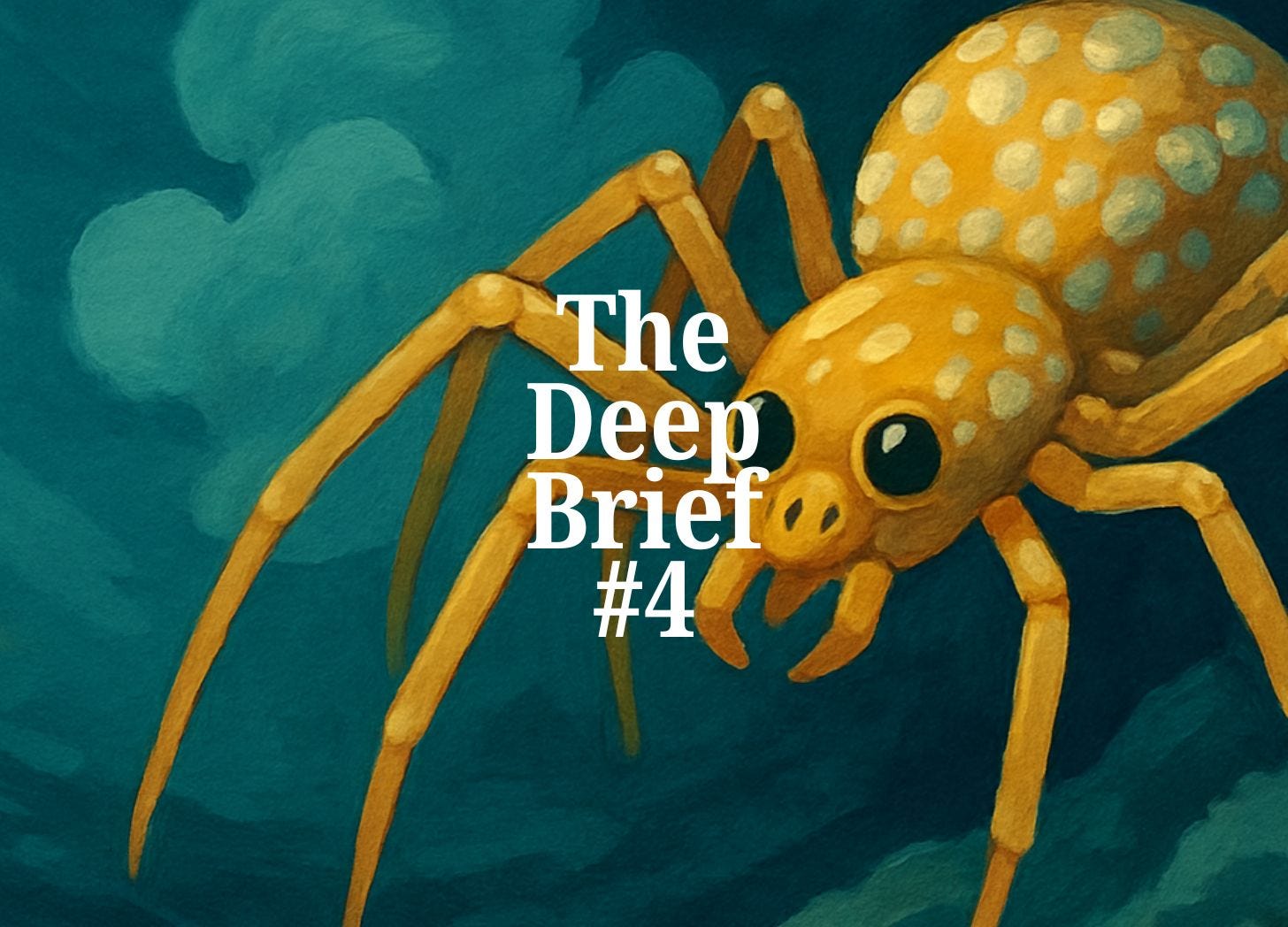The Deep Brief #4 | Friday 20 June 2025
Your end-of-week ocean intelligence
What is The Deep Brief?
Each Friday, I scan global headlines, frontline campaigns, and scientific papers to bring you the most urgent, overlooked, or powerful stories shaping our relationship with the sea. This is your end-of-week ocean intelligence, built to inform, agitate and equip you.
Three deep dives. Three quick hits. One hard truth from the sea.
Here’s what you need to know this week, from methane spiders to mining scars.
1. Scientists found methane-powered spiders at the bottom of the sea
New deep-sea discovery reveals animals farming microbes for survival.
Scientists have discovered that strange deep-sea sea spiders are doing something remarkable. They live near methane seeps off the Pacific coast and grow special bacteria on their bodies that feed on methane. These spiders don’t just carry the bacteria, they eat them. By farming and feeding on these microbes, the spiders turn methane from the seafloor into body tissue. This is the first time this kind of partnership has been seen in sea spiders, revealing a new way deep-sea animals survive in extreme environments.
Read more: PNAS – June 16
2. Oceans are getting greener at the poles and bluer at the equator
Phytoplankton shifts are changing the colour and function of the ocean.
A new satellite study shows that polar oceans are becoming greener while tropical and subtropical waters are turning bluer. The change is driven by shifts in phytoplankton, tiny plant-like organisms that form the base of the marine food web and play a key role in absorbing carbon dioxide. More phytoplankton means more green, less means more blue. These changes could impact global fisheries and the ocean’s ability to store carbon. Scientists say the patterns are clear, although it is too early to say for sure if climate change is the main driver.
Read more: Science – June 19
3. Living near oceans polluted with microplastics may harm your heart
Microplastics may pose a direct risk to human health, not just the ocean.
A new study suggests that living near microplastic-polluted oceans could raise your risk of heart disease and diabetes. Researchers found that people in coastal regions with high levels of plastic pollution in seawater and air had more markers of inflammation, oxidative stress and insulin resistance. This is one of the first studies to show that ocean pollution can directly impact human health, not just marine life.
Read more: American Heart Association – June 17
In Brief
Atlantic deep sea to be fully mapped by 2030
The seven key commitments from the UN Ocean Conference
Millions To Be Invested In Blue Economy Projects In “Big Ocean States”
Below the Surface
Each week, I end with one story that is too urgent to ignore, even if the world barely noticed.
Seabed mining is becoming one of 2025’s biggest environmental flashpoints
Deep-sea mining is back in the spotlight. Governments around the world are deciding whether to open up the ocean floor for resource extraction, despite mounting evidence that mining can cause permanent damage to fragile marine ecosystems. In New Zealand, a fast-track law could weaken environmental and Indigenous protections, allowing controversial seabed mining projects to move forward. Meanwhile, places like Hawaii have banned the practice entirely. The global divide is widening. What happens next in New Zealand could set a precedent for the Pacific and beyond.
Read more: The Conversation – June 15
If you learned something new, consider giving this post a like or share. It helps more people find these stories and keeps the ocean in the conversation.
This newsletter runs on curiosity, caffeine and community. If you believe in independent ocean journalism, you can show your support by making a pledge. It takes just a few seconds, and you won’t be charged unless I reach 1,000 supporters.
To pledge, scroll to the top and click “Pledge your support”. If you’re already subscribed for free, you can upgrade any time in your account setting... either way, thanks for being part of this.
Thanks for reading The Deep Brief.
See you next week.
- Luke



